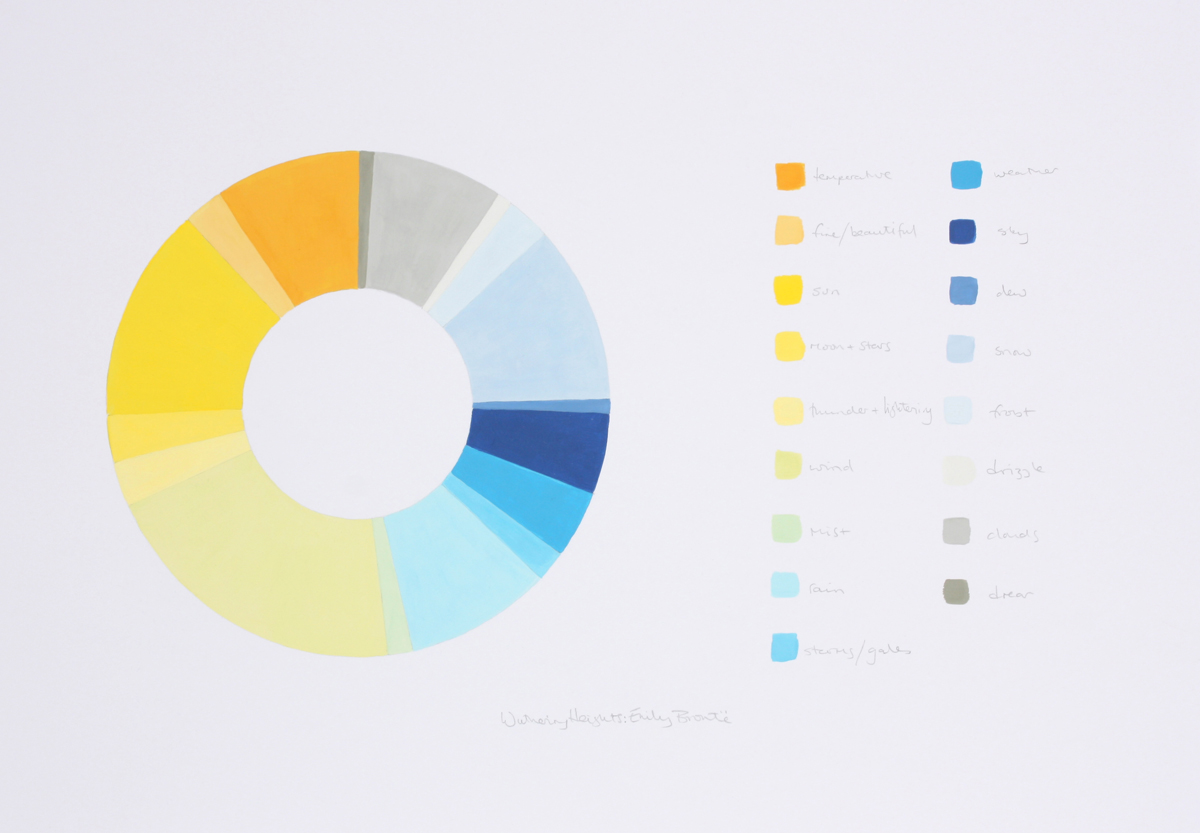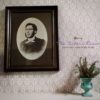This year we’d like to commemorate Emily with an article that once again brings together art and literature. We’ve already told you about The Brontë Weather Project, an art project created by Rebecca Chesney at the Brontë Parsonage Museum in 2012. Those of you who have read the article by art historian Elena Lago from Art Plug and Play, already know that Rebecca’s work was based on the importance of weather in Jane Eyre, Wuthering Heights and The Tennat of Wildfell Hall. Comparing the weather data collected in Haworth with the references to the weather in the Brontë novels, the artist created three different kinds of artwork. Among them, there are the amazing Colour Wheels– three pie charts (one for each sister) that visually represent how many times a specific weather condition was mentioned in the most renowned Brontë novels. Thanks to this visual representation, Chesney was also able to identify each sister with an atmospheric element and today we want to analyse together her Colour Wheel.

Can you see the biggest slice of the pie chart? It belongs to the category “wind” and that is the element that according to the artist symbolically represents Emily. “Bitter whirl of wind“, “Cold blast“, “Gusty wind“, these are just some of the words used by Emily to describe the cold wind of the moors in Wuthering Heights, and she did it in such a masterful way that her descriptions make us actually shiver. But many other interesting observations can be made looking at the pie chart.
For instance, the first thing we noticed was the scarce amount of words related to the category “rain” (light blue), which is surprisingly even scarcer than the amount of words belonging to the category “sun“. In her novel Emily prefers snowy weather instead, and the category “snow” (light blue-grey) occupies one of the biggest slices of the pie.
Another interesting element is that, according to Chesney’s research, the word “sky” (dark blue) appears in Emily’s novel less times than in the other sisters’ novels. This is very peculiar, especially if we compare Chesney’ s findings with the research made by the brilliant Japanese scholar Reiko Tsukasaki in 2000; she analysed all Emily’s poems and she found out that among the vocabulary belonging to nature, the word “sky” is one of the most frequently mentioned –84 times – whereas the word “wind” only appears 74 times.
Are you surprised by Rebecca’s findings? What you think is the weather condition or natural element that best represents Emily?
If you want to know more about this amazing artist’s Brontë project, don’t miss her interview: The Sisters’ Room and Art Plug&Play interview Rebecca Chesney.
Selene





